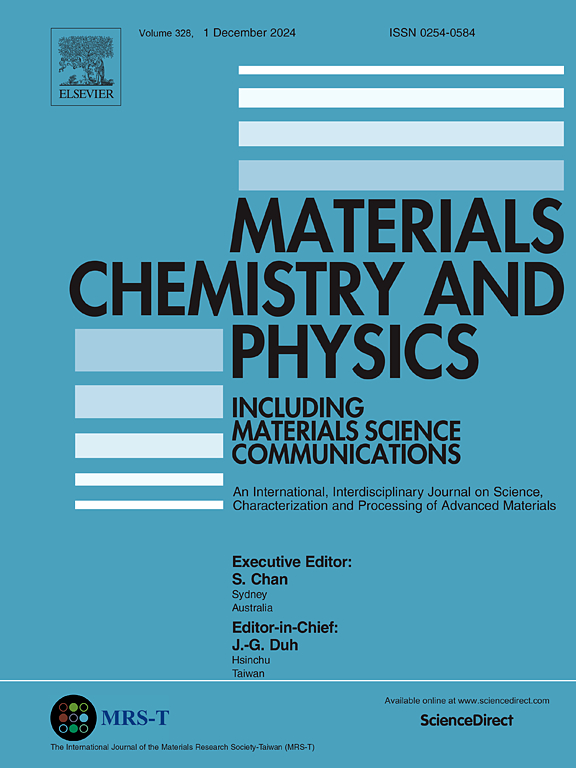无铅新型直接带隙双钙钛矿氧化物X2AlBiO6 (X = Mg, Ca, Ba)在光电和热电技术中的应用的第一性原理研究
IF 4.3
3区 材料科学
Q2 MATERIALS SCIENCE, MULTIDISCIPLINARY
引用次数: 0
摘要
在本研究中,采用密度泛函理论研究了新型双钙钛矿氧化物X2AlBiO6 (X = Mg, Ca, Ba)的结构、电子、光学和热电性质。容差因子、八面体因子和内聚能为这些新型立方材料的结构和热力学稳定性提供了证据。利用Trans-Blaha修饰的beck - johnson势计算出的能带结构表明,化合物的直接能隙为:Mg2AlBiO6为2.42 eV, Ca2AlBiO6为2.15 eV, Ba2AlBiO6为1.3 eV。特别是,Ba2AlBiO6的带隙非常接近单结太阳能电池的Shockley-Quiesser带隙值。此外,光学特性表明Ba2AlBiO6在可见光区和X2AlBiO6 (X= Mg, Ca)的紫外区都有显著的吸收。最后,化合物表现出显著的热电性能,强调了黄金范围内塞贝克系数的增强,具有较高的品质值。因此,计算的性质表明,这些材料是光电子应用的有希望的候选者,如光伏、光催化剂和半导体工业中的热电器件。本文章由计算机程序翻译,如有差异,请以英文原文为准。
A first-principles investigation of lead-free novel direct band gap double perovskite oxides X2AlBiO6 (X = Mg, Ca, Ba) for implementation in optoelectronic and thermoelectric technologies
In this study, the structural, electronic, optical, and thermoelectric properties of novel double perovskite oxide materials XAlBiO (X = Mg, Ca, Ba) are investigated using the widely used density functional theory. The tolerance factor, octahedral factor, and cohesive energy provide evidence of the structural and thermodynamic stability of these novel cubic materials. The calculated band structures using the Trans-Blaha modified Becke–Johnson potential show that the compounds exhibit a direct energy gap of 2.42 eV for MgAlBiO, 2.15 eV for CaAlBiO and 1.3 eV for BaAlBiO. In particular, the band gap of BaAlBiO is very close to the Shockley-Quiesser band gap value of a single-junction solar cell. Furthermore, optical characteristics show that remarkable absorption occurs within the visible region for BaAlBiO as well as the ultraviolet region for XAlBiO (X= Mg, Ca). Finally, the compounds demonstrate notable thermoelectric properties, emphasizing the enhanced Seebeck coefficient at the golden range with a high figure of merit. Therefore, the calculated properties indicate that these materials are promising candidates for optoelectronic applications, such as photovoltaics, photocatalysts, and thermoelectric devices in the semiconductor industry.
求助全文
通过发布文献求助,成功后即可免费获取论文全文。
去求助
来源期刊

Materials Chemistry and Physics
工程技术-材料科学:综合
CiteScore
8.70
自引率
4.30%
发文量
1515
审稿时长
69 days
期刊介绍:
Materials Chemistry and Physics is devoted to short communications, full-length research papers and feature articles on interrelationships among structure, properties, processing and performance of materials. The Editors welcome manuscripts on thin films, surface and interface science, materials degradation and reliability, metallurgy, semiconductors and optoelectronic materials, fine ceramics, magnetics, superconductors, specialty polymers, nano-materials and composite materials.
 求助内容:
求助内容: 应助结果提醒方式:
应助结果提醒方式:


